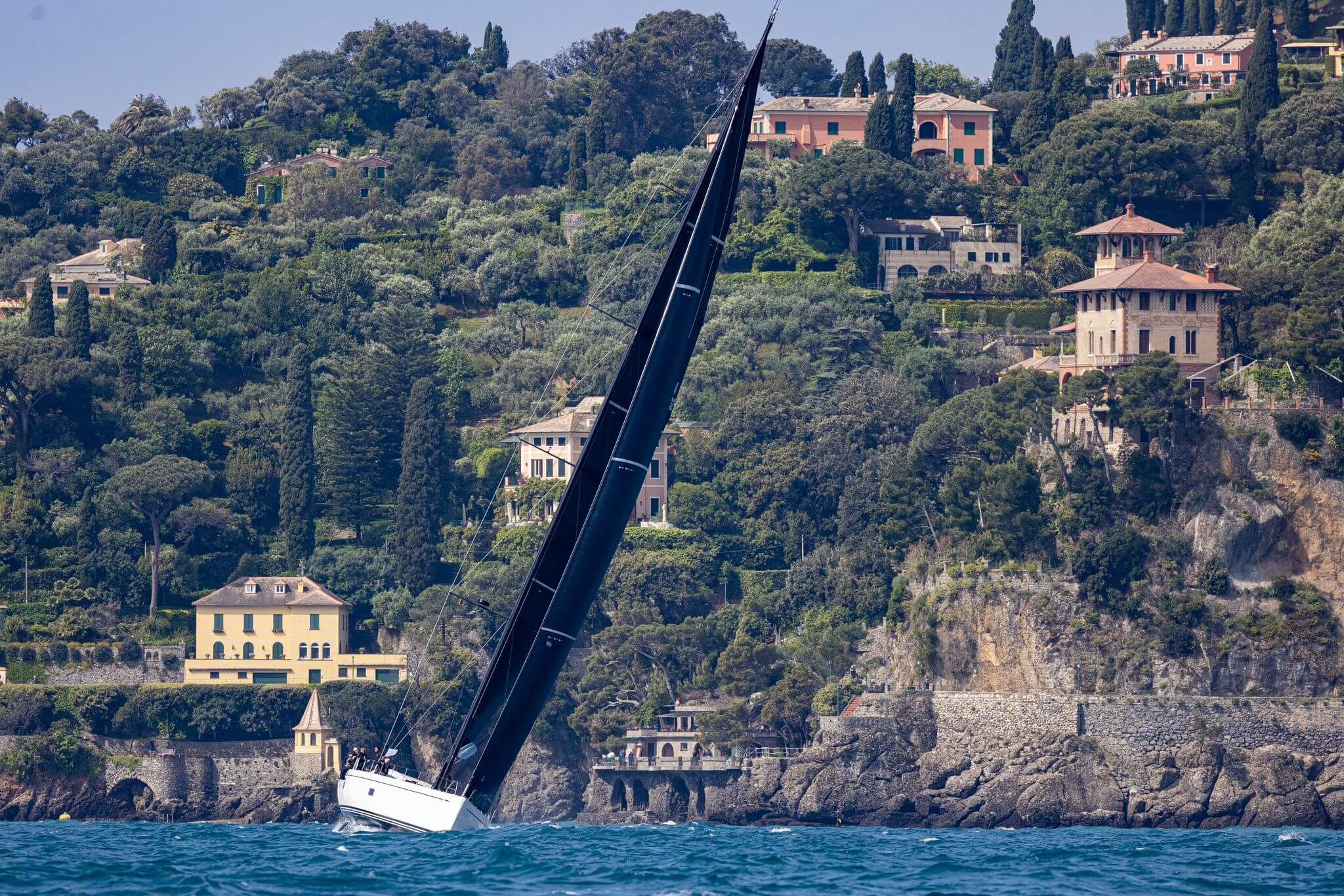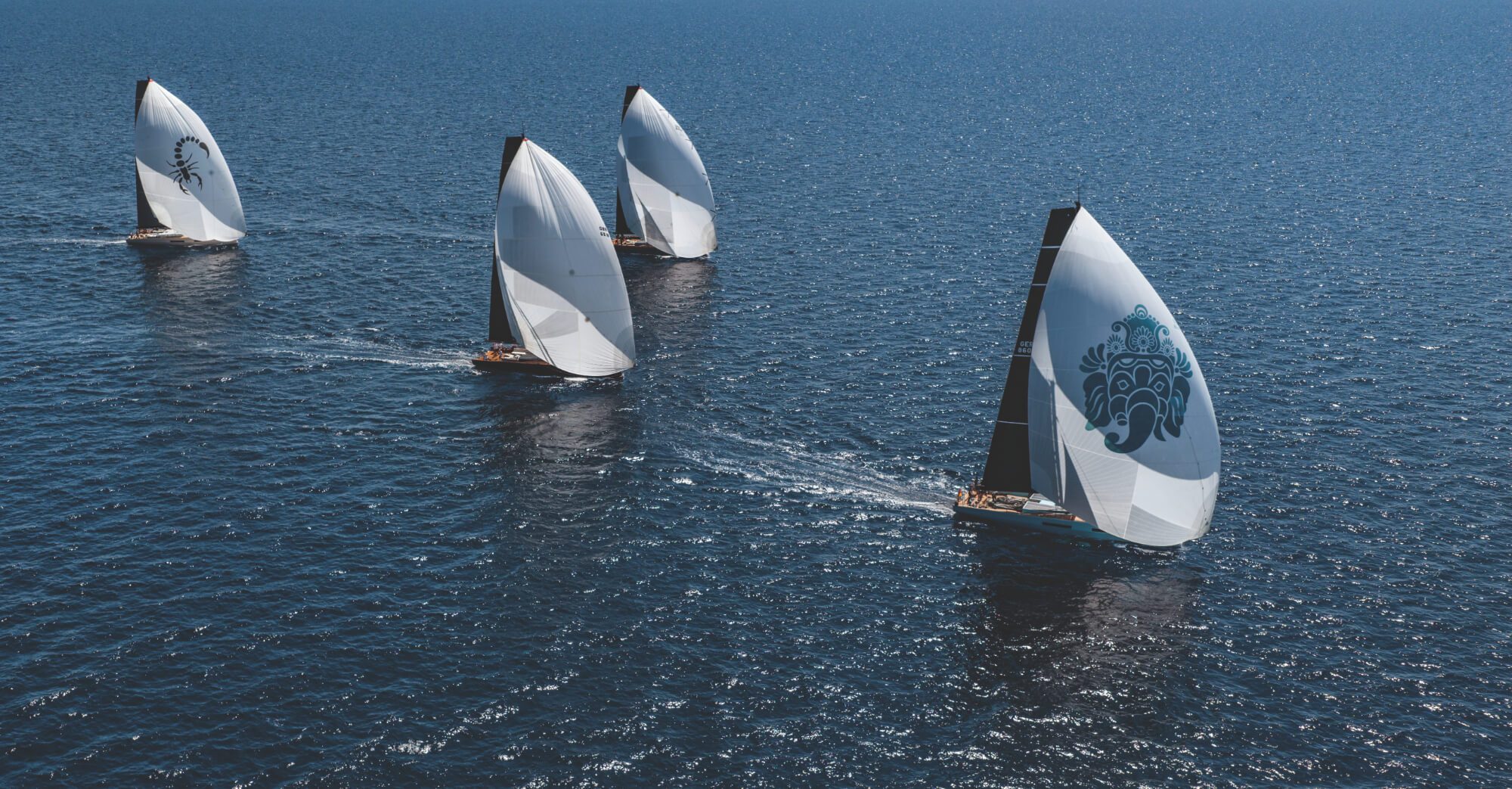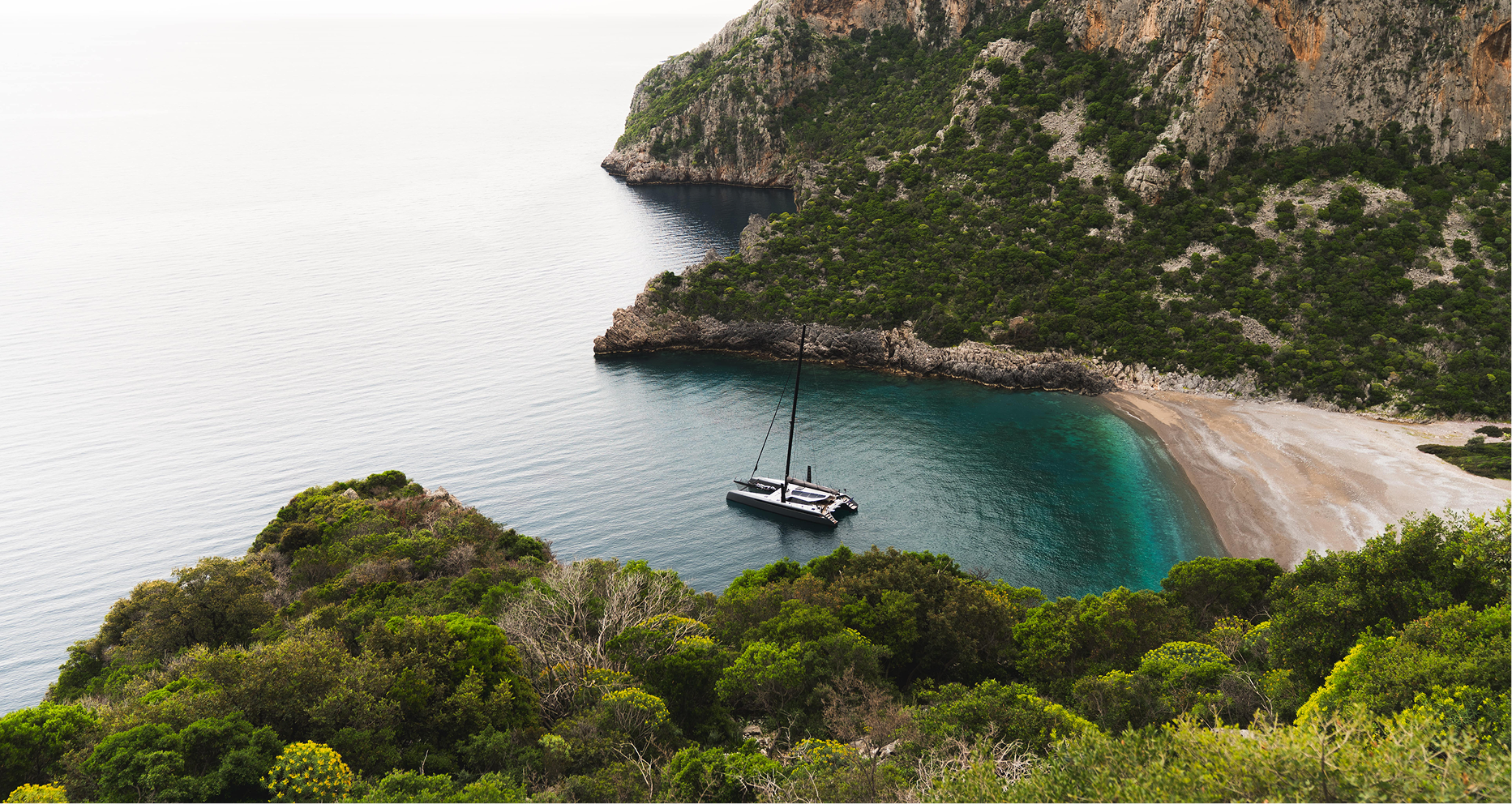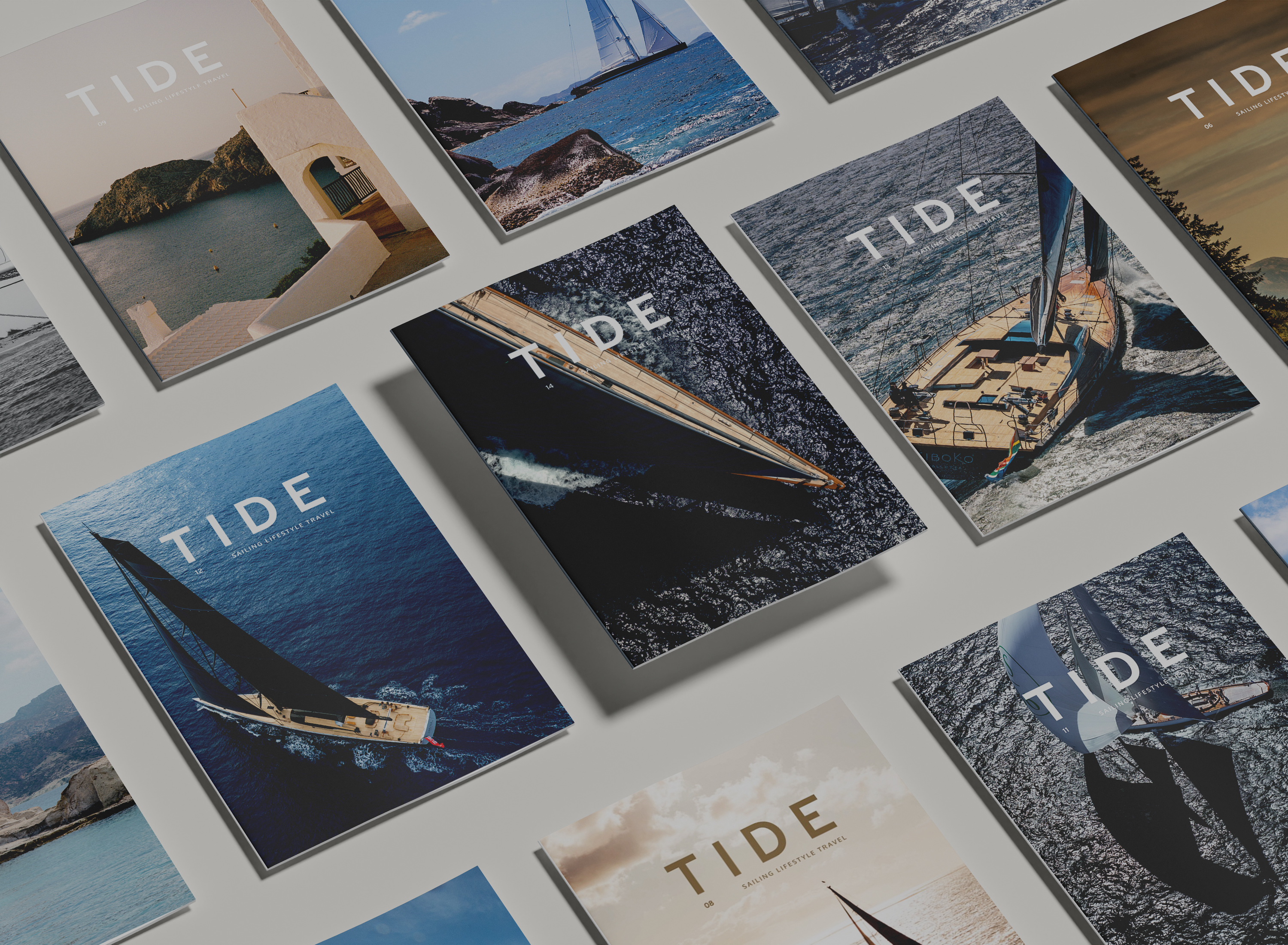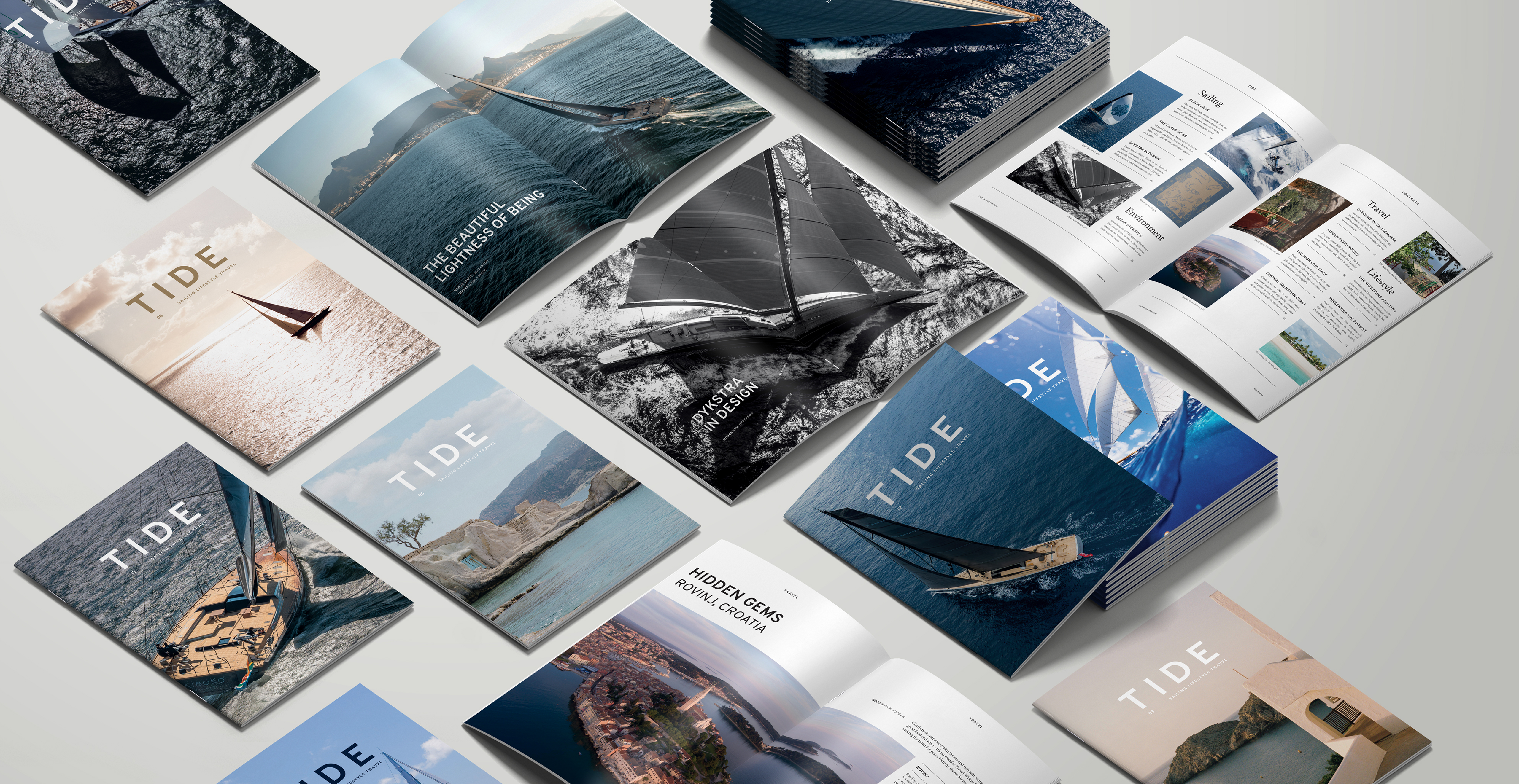Redefining high-performance cruising, the new generation of Swan 98 offers speed and luxury. Just as comfortable crossing oceans as hopping between shallow tropical islands, racing around headlands or navigating the fjords, the Finnish-built yachts are widely touted as the best of all worlds. TIDE speaks with Nautor Swan’s team to find out what the 98 is all about.
The rich history of yacht building is etched into the fabric of every modern boat, but few contemporary yards can boast such an evocative heritage as Nautor Swan. “We may be in the middle of nowhere, but Finland has centuries of experience building wooden yachts, fishing vessels and warships,” explains Vanni Galgani, Head of Product Marketing.
Today the Finnish yard is recognised for their well-crafted sailing yachts, which strike a harmonious balance between high-performance racing technology and on-board comfort. But, as Galgani is keen to point out, none of this would be possible without their Nordic seafaring legacy. Founded in 1966 by sailor Pekka Koskenkyla, Swan continues to nurture these links to their past while developing new technology.
“For us, it’s always about evolution, not revolution,” Galgani says. “Whenever we build a new Swan, you can be sure it’s a step forward. And you’ll never find anything that’s purely there out of fashion. * * There’s no extremism or virtuosity for the sake of it. Our customers aren’t show-offs – they’re people who love to sail, steer the boat, and have fun. And sometimes they also like to race.
“We build fast yachts that are 100% cruisers, but are also easy enough to sail, so even non-professional crew can push it to the limits of its performance.”
These principles are seen in the 98, one of the latest additions to the builder’s Swan Maxi line, which launched back in the 1970s. Fast in its class, but also a true family sailing cruiser, the first of these new generation Maxis exited the shed doors of Swan’s Pietarsaari facility in 2020. Three more quickly followed.
In the 1980s, Swan entered a new era with the appointment of legendary Argentinian naval architect Germán Frers as designer. Today’s models still follow the original principles of the very early S&S designed boats, which includes a telescopic keel option reducing the draft to about 10 feet.
Inside, the understated Nordic flair that has come to embody Swan interiors since then is just one example of how the company has evolved to offer a fusion of functionality and style.
Designed by Genovese architect Misa Poggi, the 98 interiors offers two layouts: owner-aft or owner-forward staterooms, plus three guest cabins each with ensuite bathrooms, replete with Italian textiles and leathers. “I love them all, but the latest owner-forward version is probably the one I like best. It’s perfect for cruising, because the owner can sleep in the more comfortable cabin, but the crew also has a large area close to the winches and wheels, so it’s a great balance.”
“There are four priorities when we build a Swan: reliability, performance, handling and appearance. A sloop mast is mostly more efficient than a ketch rig or schooner, and more efficient when it comes to performance. As for handling, with one mast you don’t have several sails to handle, and you also don’t need tons of space to store the sail.”
“In fact, speaking more broadly, one of the most positive things about our client base is that it’s a mix of new and existing customers. The experienced customers are already familiar with the sailing world, while newcomers bring a fresh approach. Having invariably achieved great success in business, they’ll have their own opinions, but I like this because it forces us out of our silo and helps broaden our minds.
Something Swan are seeing more and more of is a desire for greener credentials when it comes to yacht design. “Propulsion is of course a huge part of this, which is why we’ve developed a diesel-electric system, but it’s not the only factor,” Galgani explains. “On a sailing boat, you’re only using the engine to get out from the marina, then you’re mostly powered by the wind. Our new ‘Green and Blue’ approach is about using less water, reducing plastic usage and waste impact onboard, adding to the overall sustainability of the sailing experience.”
Of course, one of the best ways the industry can keep its carbon footprint down is by producing yachts that are durable, giving both the vessels and their fittings a longer lifespan. For Swan, this is a major source of pride.
“Our yachts retain their price, not only because they’re built well, but because the owners look after them. Even those that are 30 or 40 years old are usually in good shape. That’s testament to the passion of our customers as they cherish and look after them.”
Over 2,000 yachts later, Swan are continuing to flourish. The team are currently busy with the production of three new Maxis, namely Swan 88, Swan 108 and Swan 128, marking another exciting chapter in the company’s journey. With modern hull designs, they’re pivoting towards larger and more luxurious bluewater cruising yachts, “proper globe trotters that are still able to win top level races.”
“There’s nothing on our yachts that explicitly reveals them to be a Swan,” Galgani says. “But when a sailor walks into a marina or bay and spots one, they instinctively know. And that’s the best endorsement anyone can give us.”


